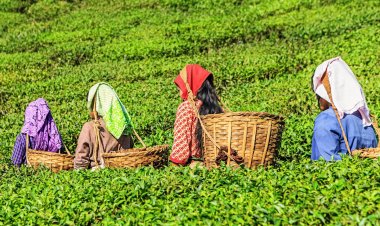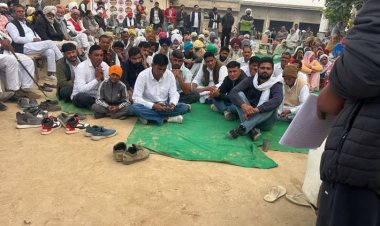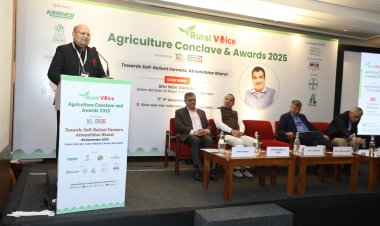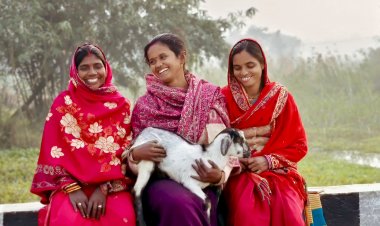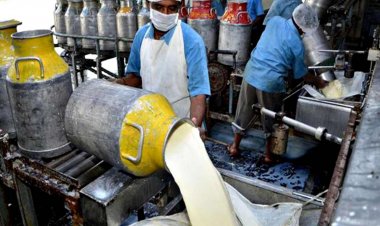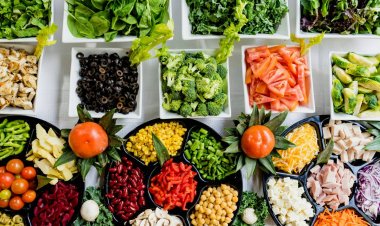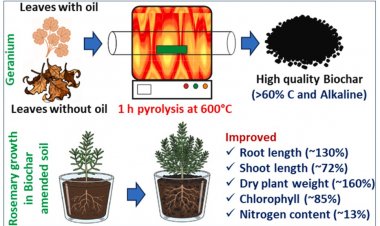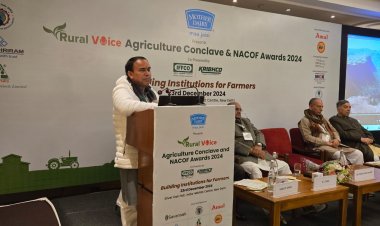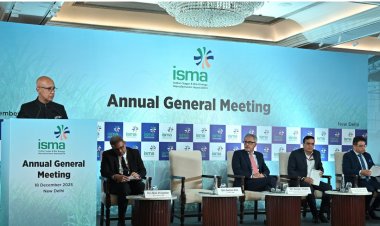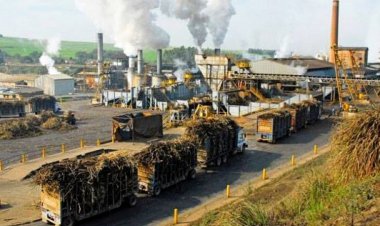Low foodgrain stock in central pool, uncertain Kharif rice output limit options for politics of free grains
According to the latest Food Corporation of India data, the central pool stock of wheat and rice on July 1, 2023 stood at 711.04 lakh tonnes, the lowest in five years since July 1, 2018. In this, the quantity of wheat is 301.45 lakh tonnes and the quantity of rice is 409.59 lakh tonnes. This is the reason why the central government, apprehensive about the production of Kharif season, has refused to give rice from the central pool to Karnataka for free distribution of five kilos rice under the Anna Bhagya Yojana. Not only this, under the Open Market Sale Scheme (OMSS) of the Food Corporation of India, states have been barred from bidding for wheat and rice.
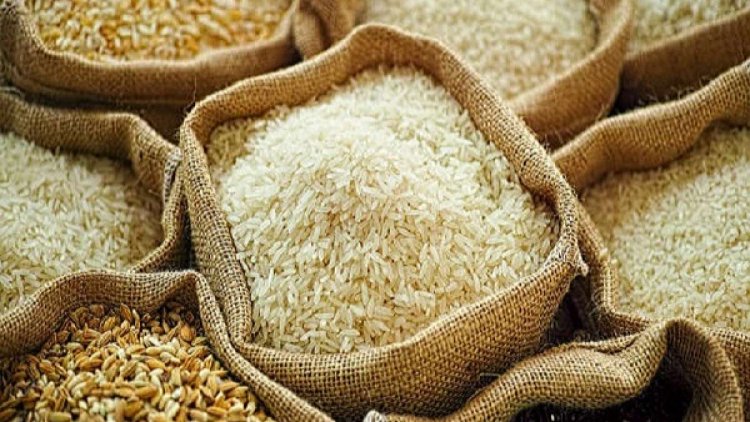
The stock of wheat and rice in the central pool reached a five-year low as on July 1, 2023. On the other hand, heavy rains triggered floods in the northern states at a time when the impact of El-Nino on monsoon is also visible as many rice-producing states in the country are facing drought-like situations. Due to this, there is apprehension over the volume of rice production in the current Kharif season.
According to the latest figures, so far, the area under paddy in the country is about 10 per cent less than in the same period last year. There was a time during Corona, when apart from the five kg of foodgrains available under the National Food Security Act (NFSA), the government had given an additional five kg of foodgrains free of cost to more than 80 crore people. This was possible because there were huge stocks of food grains in the central pool. But this is not the case now.
According to the latest Food Corporation of India data, the central pool stock of wheat and rice on July 1, 2023 stood at 711.04 lakh tonnes, the lowest in five years since July 1, 2018. In this, the quantity of wheat is 301.45 lakh tonnes and the quantity of rice is 409.59 lakh tonnes. This is the reason why the central government, apprehensive about the production of Kharif season, has refused to give rice from the central pool to Karnataka for free distribution of five kilos rice under the Anna Bhagya Yojana. Not only this, under the Open Market Sale Scheme (OMSS) of the Food Corporation of India, states have been barred from bidding for wheat and rice.
An important thing is that during the period from April 2020 to December 2022, ten kg foodgrains were given per person as the central government gave five kg additional foodgrains free of cost from the central pool. Along with this, India has exported wheat and rice heavily in the last three years. But due to decrease in production of wheat last year and increase in prices in the domestic market, the government banned the export of wheat in May 2022, which is still continuing.
Table 1: Exports of Rice and Wheat (lakh tonnes)
|
Year (Apr-Mar) |
Non-Basmati | Basmati | Total Rice | Wheat |
| 2012-13 | 66.88 | 34.60 | 101.48 | 65.15 |
| 2013-14 | 71.48 | 37.54 | 109.03 | 55.72 |
| 2014-15 | 82.26 | 37.02 | 119.28 | 29.15 |
| 2015-16 | 63.74 | 40.45 | 104.19 | 6.14 |
| 2016-17 | 68.13 | 40.00 | 108.13 | 2.62 |
| 2017-18 | 86.33 | 40.52 | 126.85 | 2.30 |
| 2018-19 | 75.34 | 44.15 | 119.49 | 1.83 |
| 2019-20 | 50.36 | 44.55 | 94.91 | 2.17 |
| 2020-21 | 130.88 | 46.32 | 177.19 | 20.86 |
| 2021-22 | 172.61 | 39.48 | 212.09 | 72.35 |
| 2022-23 | 177.87 | 45.61 | 223.47 | 46.93 |
Source: Department of Commerce.
Not only this, on June 12, 2023, the central government imposed a stock limit on wheat stock till March 31, 2024, so that prices can be controlled. On the other hand, in the case of rice, the government had banned the export of broken rice last year, and later on imposed an export duty of 20 per cent on the export of non-sela and non-basmati rice.
At the same time, looking at the current situation, speculations are being made that the government may ban the export of non-basmati rice. While the reason for this is believed to be the firmness in the prices of rice in the domestic market, the apprehension about rice production in the Kharif season is being seen as another reason. During the Covid-19 period from April 2020 to December 2022, food grain offtake from central pool was very high. In 2020-21, it was 929 lakh tonnes, in 2021-22 it was 1,056 lakh tonnes and in 2022-23 off-take was 927 lakh tonnes as the Central government was giving 10 kg of wheat and rice per person per month to the beneficiaries.
In 2013-14, in the seven years after implementation of NFSA, on an average, 625 lakh tonnes of foodgrains were lifted from the central pool. Apart from this, the country's foodgrains were also exported the most for three years from 2020-21. In this, 212 lakh tonnes of rice worth $ 9.66 billion was exported in 2021-22, while 223 lakh tonnes of rice worth $ 11.14 billion was exported in 2022-23, whereas in 2021-22, 72 lakh tonnes of wheat worth $ 2.12 billion was exported, and in 2022-23, 47 lakh tonnes of wheat worth $ 1.52 billion was exported.
But now the situation is not the same because the government does not have the same stock of foodgrains in the central pool. This is the reason that in case of non-availability of rice, the Congress government in Karnataka decided to give cash of Rs 170 per month at the rate of Rs 34 per kg instead of five kg rice to BPL beneficiaries under the other luck scheme as an election promise. Even if the Central government wants to, it cannot give additional foodgrains to the states to fulfill the election promises of free foodgrains. It is not just a matter of the Congress-ruled state. If fact the Centre is not in a position to provide additional foodgrains for such schemes even to the BJP state governments in other states.
In such a situation, for the first time in the country, a largescale Direct Benefit Transfer (DBT) scheme has been started for free ration at the state level. Now the reason behind all this is clear -- if we look at the stock of foodgrains in the central pool. The total stock of wheat and rice in the central pool as on July 1, 2023, is at the lowest level in five years since 2018. In such a situation, it becomes the responsibility of the government to carefully store this stock for the difficult situation arising due to any seasonal change.
Table 2: Stocks in Central Pool on July 1, 2023 (lakh tonnes)
| year | Wheat | Rice** | Total |
| 2013 | 423.97 | 315.08 | 739.05 |
| 2014 | 398.01 | 276.60 | 674.61 |
| 2015 | 386.80 | 216.71 | 603.51 |
| 2016 | 301.81 | 246.69 | 548.50 |
| 2017 | 322.75 | 264.68 | 587.43 |
| 2018 | 418.01 | 275.57 | 693.58 |
| 2019 | 458.31 | 354.63 | 812.94 |
| 2020 | 549.91 | 394.31 | 944.22 |
| 2021 | 603.56 | 491.10 | 1094.66 |
| 2022 | 285.10 | 472.18 | 757.28 |
| 2023 | 301.45 | 409.59 | 711.04 |
| Norm* | 275.80 | 135.40 | 411.20 |
*Minimum operational stock plus strategic reserve for July 1;
**Includes rice equivalent of un-milled paddy.
Source: Food Corporation of India.
Although the foodgrain stock in the central pool is sufficient for the requirement, the real concern is the production of the current Kharif season. While assembly elections are to be held in many politically important states this year, Lok Sabha elections are also to be held in the year 2024. In such a politically surcharged scenario, the government would not want the increase in the prices of food grains like wheat and rice to become an election issue. Therefore, the government is closely monitoring the status of monsoon and the status of paddy crops.
As mentioned, northern states are facing flood situations due to heavy rains. At the same time, the level of rainfall is below normal in the major rice-producing states. Rainfall in Telangana is 24.2 per cent deficient, 16.1 per cent deficient in Andhra Pradesh and 21 per cent deficient in Chhattisgarh on the long-term average till July 16. While Odisha has received 23.1 per cent less rain than normal, Jharkhand 41.4 per cent less, Bihar 32.3 per cent less and West Bengal 37.2 per cent less.
In fact, this year the effect of El Nino is more and this is the reason why the weak monsoon rains in the above states can be considered as the effect of El Nino. The reason for heavy rains is in the northern states of Rajasthan and Gujarat, due to the Biparjoy storm and then due to the combination of Western Disturbance and Monsoon caused heavy rains. Against the normal area of 399.5 lakh hectares of kharif season, the area under paddy has reached only 123.18 lakh hectares till July 14, 2023 due to deficient rains in major paddy growing states, which is about 10% less than the same period last year. This situation can also affect the export of rice.
In the month of June, the inflation rate of foodgrains has been 12.7 per cent. The main reason for this is the increase in domestic prices of rice and wheat. At the same time, there is a trend of increase in the prices of rice in the global market. The price index for rice in the food inflation index of United Nation’s Food and Agriculture Organisation (FAO) reached at 126.2 in June, up 13.9 per cent from a year ago.
Not only this, Parboiled rice exported from India is getting a price of $ 421 to 428 per tonne, which is the highest level since April 2018. According to the US Department of Agriculture (USDA), India remained the world's largest rice exporter with a share of 40.4 per cent in 2022-23. However, in case of wheat, the situation is better in the global market and due to heavy supplies from Russia and Ukraine, wheat prices have come down significantly.
In such a situation, if India has to import wheat to control the prices, it will not be very expensive, but it is not so in the case of rice. Anyway, if the world's largest exporting country becomes an importer, then it can create a situation of huge rise in global prices. Though the number of countries exporting wheat in the global market is very high, it is not so in the case of rice.
In such a situation, the options with the government regarding food grains have become very limited. Therefore, instead of giving free foodgrains for political gains, the option of cash for states and central government level seems more practical.



 Join the RuralVoice whatsapp group
Join the RuralVoice whatsapp group

















